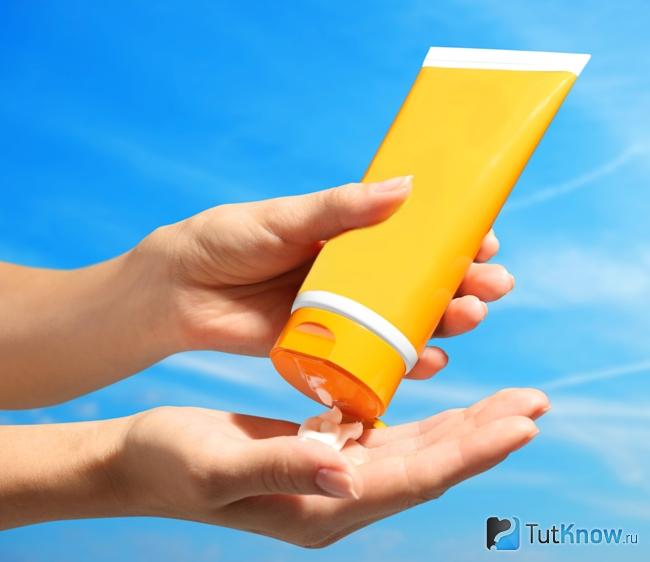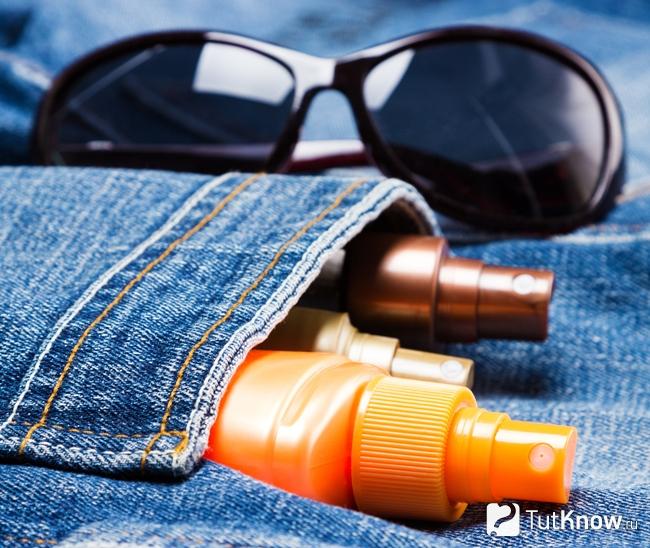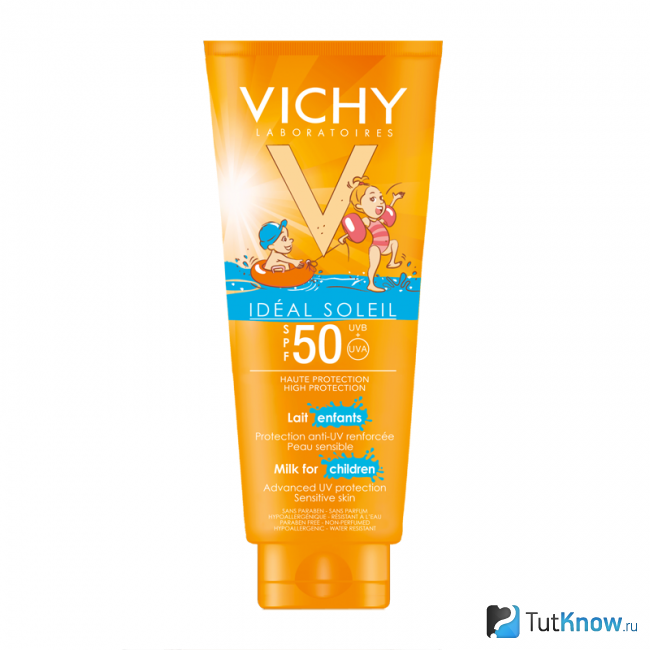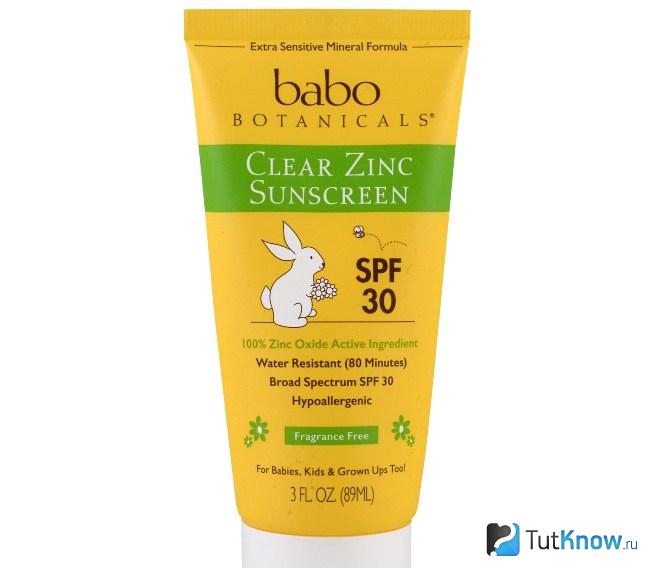How to choose sunscreen
The content of the article:
Sunscreen is a protective cosmetic product that protects the skin from harmful UVA and UVB radiation. It is necessary to choose such drugs, based on the characteristics of the skin, according to the SPF factor. Sunscreen helps to avoid burns, early aging of the epidermis, as well as the development of cancer.
What is sunscreen with SPF
Direct sunlight has an extremely negative effect on human skin. It is especially dangerous to stay under ultraviolet for a long time in the summer, when solar radiation is too strong.
Ultraviolet has three spectra - A, B, C. Type A rays are considered to be the most harmless. They are responsible for an even chocolate tan. However, at the same time, A-rays have a destructive effect on the connective tissue and provoke an accelerated process of skin aging.
Slightly more dangerous for humans is B-radiation. Rays of this type penetrate deep into the layers of the epidermis and activate the production of melanin. The latter is a pigment responsible for the tone of the skin and hair. Its main function is to protect the dermis from ultraviolet burns. Its quantity is determined by the region where a person lives and the climatic conditions surrounding him.
The most dangerous for human skin C-rays. However, they rarely reach the surface of the Earth, thanks to the protective layer of ozone.
Special cosmetic creams with SPF factors are designed to protect the skin from the harmful effects of sun rays of type A and B. The latter stands for Sun Protection Factor. This indicator determines the effectiveness of the product in terms of protecting the epidermis from spectrum rays A and B.
SPF can range from 2 to 50 units, where 2 is the weakest level of skin protection. Approximately 50% of ultraviolet rays delay such a cream.
The most popular sunscreens with an index in the range of 20-30. They are considered optimal for the normal type of European skin. At the same time, the number 20, for example, indicates that your epidermis will be able to take 20 times more solar radiation without damage than without this cream.
In addition, the SPF level helps determine the safe number of minutes that can be spent in direct sunlight. For example, if without the protection of a cream a person can get an ultraviolet burn in fifteen minutes, then thanks to a product with 10 SPF protection, he will spend 150 minutes under the sun, since cosmetics with a factor of 10 increase the safe time by ten times. After this time has elapsed, the product must be renewed on the skin.
The maximum degree of skin protection is guaranteed by products with an SPF 50 and 50+ index. They retain about 98% of ultraviolet light. Be careful, these numbers are the limit for sunscreen cosmetics. If the product packaging has a higher SPF value, then this is either a fake or a marketing ploy by the manufacturer.
Most sunscreen cosmetics protect the skin mainly from type B radiation. As a rule, it does little to protect the epidermis from A-rays. This is justified by the fact that by applying such a remedy, a person will not be left without a tan, but will only protect himself from burns and the appearance of pigmentation.
However, in recent years, dermatologists have insisted that sunscreen cosmetics should also protect against the A-rays of the sun, so that exposure to direct ultraviolet rays does not provoke the development of the so-called "sun allergy". Therefore, creams have also appeared on the market that protect against this type of radiation. However, this does not mean that it is impossible to tan with such means. In this cosmetics, the ratio of protective components from A and B radiation is approximately 1:3. Thus, you can both tan and protect your skin from harsh ultraviolet radiation.
The composition and components of sunscreen

To date, there are two main types of sunscreen cosmetics - with chemical and physical filters. The main difference between these products is that chemicals absorb ultraviolet light, while physical substances reflect it. Creams based on physical filters are called "sunscreens", chemical filters are called "sunblocks".
As a rule, chemical sunscreen compounds absorb type B rays, but recently products have appeared that are able to eliminate the danger of A-radiation. Physical sunscreens have a wider protective spectrum.
The main physical (mineral) filters are zinc oxide, iron oxide and titanium dioxide. These substances do not penetrate the subcutaneous layer and begin to act immediately after applying cosmetics. Particles of minerals refract and reflect the sun's rays, like a mirror, preventing them from penetrating into the deeper layers of the skin and damaging it.
Zinc oxide is an inorganic compound that has a beneficial effect on the epidermis, prevents the formation of free radicals under the influence of the sun's rays. Titanium dioxide is a chalky mineral product that is highly reflective.
Physical filters are absolutely safe for humans. They do not affect the composition of the blood, hormonal background, do not provoke the development of allergies and dermatitis. In recent years, manufacturers have begun to produce creams with physical filters, the size of the protective particles of which is measured in nano-units.
It is worth noting the main drawback of mineral sunscreen cosmetics - after its use, a whitish coating remains on the skin.
Sunscreen cosmetics based on chemical filters form a thin film on the skin, which allows the sun's rays to penetrate the skin, but be converted there into photoisomers. A special reaction takes place, and the energy of the photoisomers is released in long waves, which are safe for the human epidermis.
Chemical sunscreen cosmetics do not begin to act immediately after application. She needs a certain time (usually about half an hour) in order to begin to transform the sun's rays.
The role of chemical filters is performed by substances such as cinnamate, octoprilene, mexoril, avobenzone, oxybenzone, benzophenone, parsol, camphor products and others.
Chemical sunscreens are the subject of controversy among dermatologists and scientists. It has been repeatedly proven that these substances can adversely affect human health. First of all, they can act as allergens. In addition, these elements can provoke free-radical processes in the epidermis or break down under the influence of sunlight.
There is evidence that chemical filters are absorbed by the skin and enter the bloodstream, affecting the endocrine system and hormonal levels. For example, it has been proven that benzophenone can provoke female and male infertility. The most toxic effect has a filter such as oxybenzone. The average level of danger in octinoxate and homosalat. Avobenzone has low toxicity.
Also, the composition of sunscreen cosmetics includes antioxidants, for example, vitamins A, C, E, resveratol. They are not filters, but help to "capture" free radicals. In addition, minerals can be additionally included - calcium, zinc, various vegetable oils - coconut, almond, avocado, olive, wheat germ. All these components help to care for the skin, nourish it and promote regeneration. Thus, a beautiful and even tan is formed.
How to choose sunscreen

To choose the right sunscreen cosmetics, you need to consider several factors at once. It is fundamentally wrong to assume that the higher the SPF index, the more reliably your skin is protected. First, creams with a high protection factor may be more likely to cause allergic reactions. Secondly, they are not suitable for frequent use, since under their influence the dermis will not receive the necessary ultraviolet radiation and suffer from a lack of vitamin D.
Consider the main criteria for choosing the right sunscreen:
- Finding the Right SPF. It should be chosen based on your own phototype and the latitude in which you plan to sunbathe. The most optimal for Europeans is index 30. It protects the dermis and allows you to get an even tan. It is advisable to use factors 50+ to protect the skin after peeling, burns, and allergic reactions. Also, this cream can be used by people who quickly develop pigmentation.
- We study the composition of the cream for the presence of caring substances. Direct sunlight is a test for the skin. Therefore, it is important to select sunscreens that not only protect the dermis, but also nourish it. It is optimal if the sunburn cream contains panthenol, vegetable oil, extracts and soothing ingredients.
- We choose sunscreens only from trusted manufacturers. Many dubious companies that produce sunburn creams sin by overstating the UV protection factor on the packaging. You need to buy goods from well-known brands that strictly control the compliance with the declared real level of SPF.
- Checking for allergens. If you are allergic, then you should definitely examine the composition for the presence of substances that can cause you a negative reaction. For some, allergies are provoked by mineral compounds that are part of sunscreens, and someone has skin that is sensitive to the composition of sunblocks.
- A good sunscreen should be waterproof.. This is the most convenient option for a beach holiday. Of course, this does not mean that after bathing it will not have to be renewed, but in the water it will also protect the skin from solar radiation for some time.
- The older the age, the higher the SPF index should be.. Mature and aging skin needs stronger protection from ultraviolet radiation, as over the years the own protective functions of the epidermis are reduced.
sunscreen rating
Sunscreen cosmetics come in different forms. This must be taken into account when choosing a product for different skin types and appearance. In addition to the traditional form of cream, there are also lotions, milks, emulsions, oils, dry powders.
Which sunscreen to choose for dry epidermis

Dry and sensitive skin suffers more than other types of epidermis under the scorching rays of the sun. The composition of sunscreen cosmetics for such a dermis should include moisturizing ingredients, for example, glycerin, aloe extract, and so on.
Drugs containing alcohol should be avoided. These are, as a rule, various gels and sprays. It is optimal if the composition contains plant extracts and extracts, oils. True, consider their allergenicity.
For dry skin, tanning oil and milk are best. As for vegetable oils, coconut, almonds, avocados, shea butter, peach pits, sesame, wheat germ do a good job of sun protection. At the same time, orange and turmeric oils will enhance the tan, preventing the formation of burns. You can also mix oils for dry skin - avocado, sesame, wheat germ, lavender.
- Avene Mineral Cream SPF50. It has a high level of UV protection and contains reflective minerals. The drug evens out the skin, nourishes it. It has good moisture resistance.
- Clarins Creme Solaire Confort SPF20. It has a dense texture that easily and softly lies on the skin, quickly absorbed. After use, it forms a light oily film on the epidermis, which prevents dry skin from drying out under the influence of sunlight.
- La Roche-Posay Anthelios XL SPF50. A drug that is developed by pharmacists and is sold mainly in pharmacies. It dries quickly, has a non-greasy texture and is suitable for sensitive skin that is prone to breakouts and allergies.
- Nivea Suncare SPF50. A lotion that reliably protects dry skin from rays of type A and B. It is quickly absorbed by the epidermis and softens it, does not leave a sticky layer.
- Avon SPF50. A preparation based on chemical filters, which is suitable for dry and aging skin. The composition includes vitamin E, which is an antioxidant. It has a soft texture and absorbs well.
Which sunscreen to choose for oily skin

The sun's rays provoke the sebaceous glands of the skin to work more actively. Therefore, exposure to the sun for owners of oily and problem skin can adversely affect the condition of their epidermis. The task of sunscreen cosmetics for oily dermis is also to regulate the production of sebum.
Do not choose products with mineral oils in the composition. Preparations with light chemical filters are optimal for such an epidermis. Sprays and emulsions work well. They are easy to apply, absorb quickly and leave no shine. Also, cosmetics of this type do not clog pores and often include matting agents.
If you don't know which sunscreen is best for oily skin types, consider the following recommendations:
- Vichy Ideal Soleil. This lightweight spray veil is easy to apply. It does not leave marks on the skin and clothes and does not contain parabens and alcohol. It perfectly protects the epidermis from rays of type A and B, is hypoallergenic and waterproof.
- Vichy Capital Soleil SPF 50. It is a fluid cream with a light texture. It not only reliably protects the epidermis from the sun, but also mattifies the skin, does not leave a greasy sheen. The composition includes alcohol, which slightly dries problem skin.
- Obagi Medical Sun Shield. Mattifying sunscreen from the line of professional cosmetics. It has a high protection factor - 50. Suitable for oily fair skin.
- BurnOut Eco-Sensitive Sunscreen. Cosmetic product with a wide spectrum of action. Has SPF30, plastic texture. Helps fight the main problems of oily skin - acne, excessive shine, enlarged pores.
best sunscreen for normal skin

Most sunscreens, lotions, oils on the market are suitable for normal skin. Starting to sunbathe, choose cosmetics with a high SPF index. And when your skin takes on a chocolate tone, the sun protection factor can be reduced.
Normal skin accepts both physical and chemical filters well. Choose the one that suits you best for the price.
- Matis Reponse Soleil SPF20. Soft cream with the function of sun protection, as well as refreshing and moisturizing.
- Vichy Capital Soleil Velvety Cream Complexion Refining Action SPF50. Relatively inexpensive, but high-quality sunscreen for any type of epidermis. Suitable for both young and mature skin.
- Sun Energy Panthenol Green. Soft cream suitable for combination and sun-sensitive skin. Soothes the epidermis, moisturizes it and prevents it from drying out under the sun's rays.
- Oriflame Sun Zone. Inexpensive universal product from the category of mass cosmetics. Well protects the skin, does not dry and nourishes.
- Estee Lauder Cyber White Brilliant Cells Full Spectrum Brightening UV Protector SPF50/PA. This luxury product can be used by people with skin prone to freckles and age spots.
The best face sunscreen

If you do not have pronounced problems with the skin of the face, then it is allowed to use one sunscreen for both the body and the face. However, if you have too sensitive, oily, dry or pigmentation-prone skin on it, then it is recommended to buy a special sunscreen for the face.
It is desirable that cosmetics from sun exposure be of the same brand for the body and face. Consider a list of drugs that have received good reviews:
- Alba Botanica Very Emollient Mineral Sunscreen SPF30. This is a lotion with a silky texture. The composition includes plant extracts and extracts - aloe, shea. It is well applied and absorbed without leaving a trace on the skin.
- Badger Company Tangerine and Vanilla Sunscreen SPF30. Well suited for sensitive facial skin, contains plant components and minerals that reflect the rays of the sun. It has a wonderful citrus-vanilla aroma.
- MD Solar Sciences Mineral Creme Broad Spectrum Sunscreen SPF 50. It is optimally suited for the skin of the face, as it is quickly absorbed and leaves no residue. Contains no oil, only reflective minerals, antioxidants and vitamins.
- Jason Sunbrellas Family Natural Sunblock SPF20. Organic cream, hypoallergenic, suitable for all skin types. It contains extracts of grape seed, green tea, cucumber, aloe. Doesn't clog face pores.
Sunscreen for children

Sunscreens for children are classified as a separate group of cosmetics. The baby must have its own preparation for protection from the sun's rays. It is strongly recommended to choose a sunscreen for a child with physical filters - minerals.
All baby creams are designed for use from six months. Until this age, it is necessary to protect the child from the direct rays of the sun with clothing or a specially created shadow.
For children, sunscreen cosmetics with an SPF of 30 units are optimal. However, you should not opt for a product with a factor of 50+. Remember, the stronger the protective properties, the more aggressive substances are in the composition of such a cream. Also, you should not choose aerosols and sprays for babies, they can get into the lungs when sprayed. It is better to use a cream or milk.
- Alphanova Bebe. This is a natural cosmetics for babies, which consists of 99% natural ingredients and minerals. Safe and hypoallergenic.
- Babo Botanicals Clear Zinc Sunscreen SPF30. Organic, fragrance-free and high in zinc. It has the best value for money according to various surveys and consumer ratings.
- BabyLine Baby Sun Protection Cream. The sun protection index of the cream is 35 units. Well softens and moisturizes children's skin. Does not contain preservatives, fragrances and dyes.
- Bubchen. Delicate and lightly scented cream with a soft consistency. Suitable for the skin of babies of any age. Creates a reliable protective film that is not washed off even during active games on the water.
The sun's rays can not only make the skin a delicate chocolate color, but also dry it, age it and even provoke the development of cancer. Therefore, it is extremely important to protect the epidermis when sunbathing! In this case, it is necessary to choose a high-quality and suitable sunscreen for the phototype.




